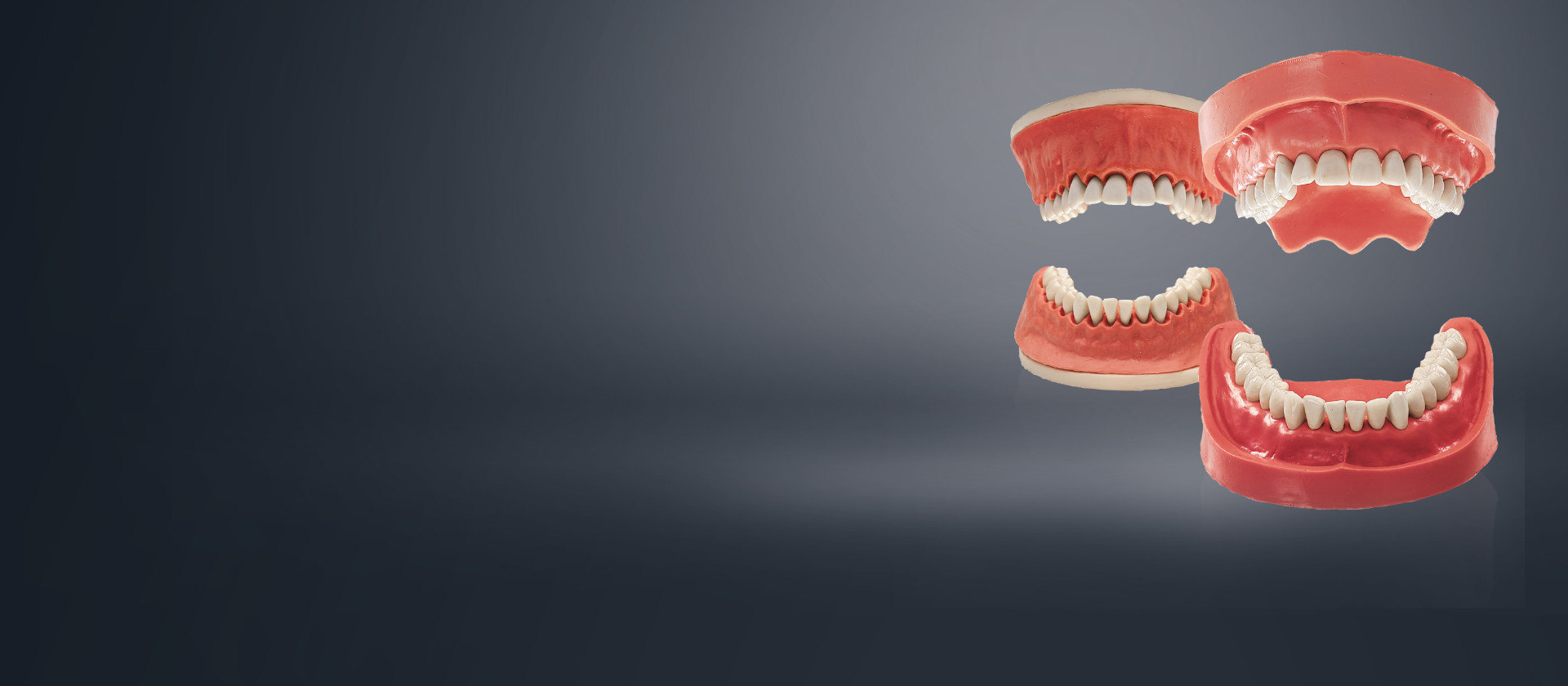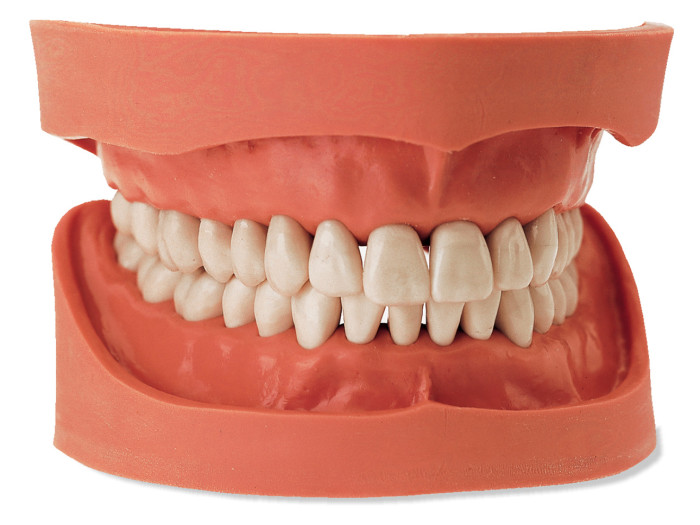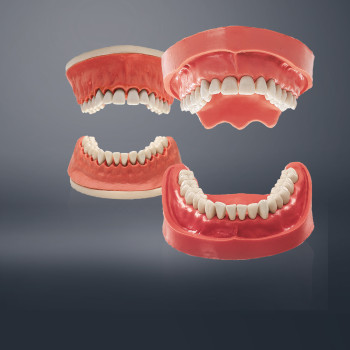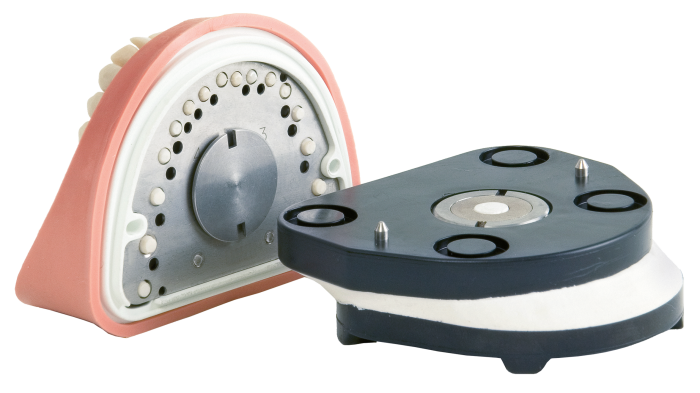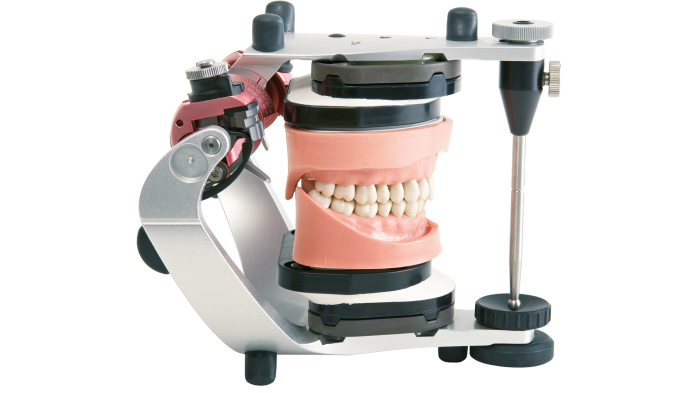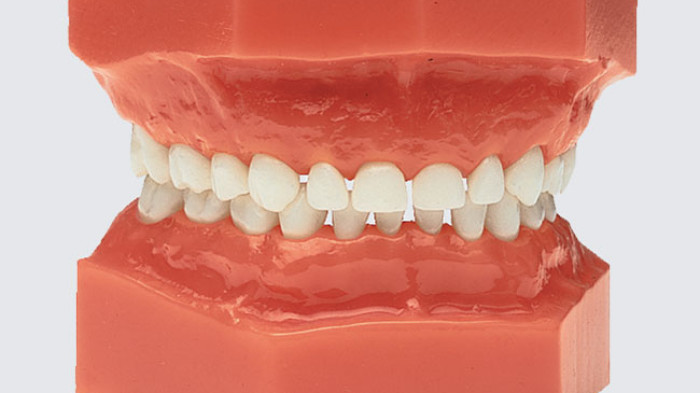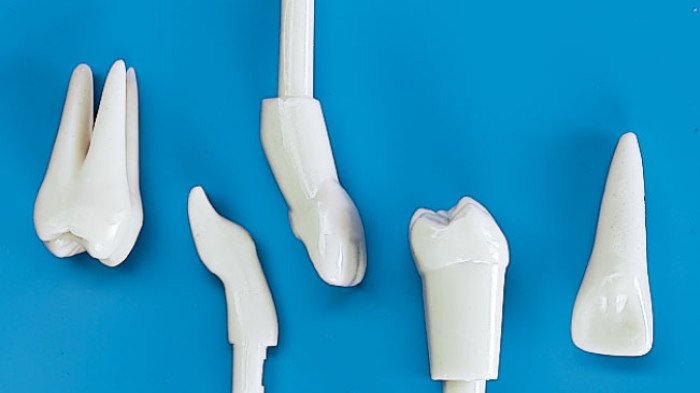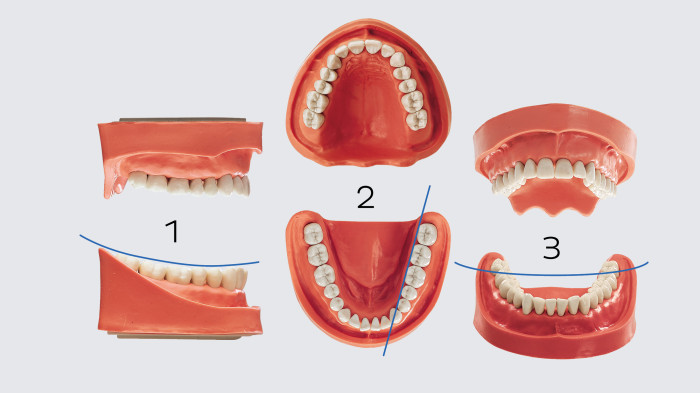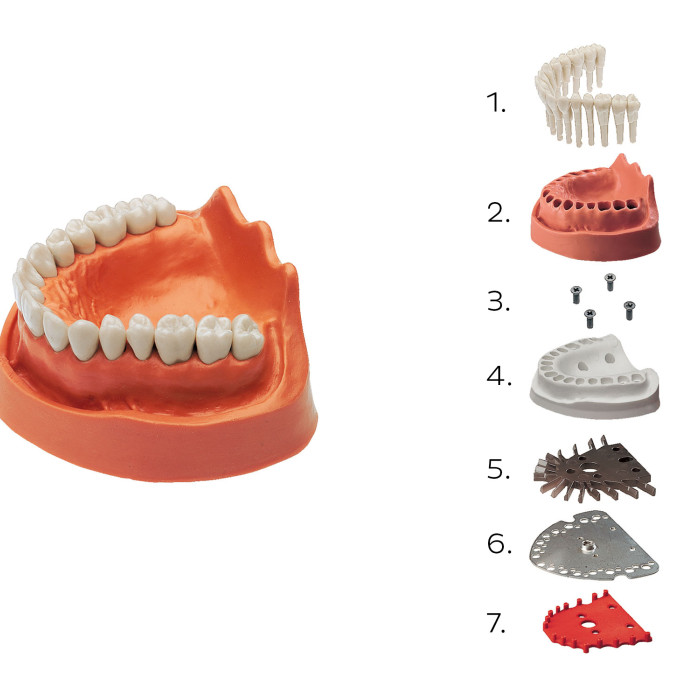Quite simply „human“.
KaVo study models and teeth are based on a copy of an original patient, with all pertinent anatomical and morphological details. When mounted in a suitable jaw-simulator (G20, G40, G50), the functional relationship between tooth structure and the morphology of the TMJ can be meaningfully taught.
The retention system holding the teeth in the model base reliably prevents loss of occlusion when teeth need to be exchanged. The movement of the teeth, together with the interdental space, enables matrix bands and rubber dams to be used.
Provision has been made for the simulated teeth to be moved horizontally, consistent with normal function, enabling working under virtual „human“ conditions. KaVo models incorporate all relevant compensation curves – an important teaching aid.
Simulated teeth with all
morphological details.
For KaVo the human being is the criterion – one example of which is the material used for the teeth: the hardness is very similar to natural dentine.
This, together with the superb reproduction of the tooth anatomy, provides the student from the beginning with the correct touch for later use on a real patient.
Easy mounting of models in the articulator.
The transfer plate enables KaVo models to be mounted in any articulator with sufficient headroom. The models can then be correctly articulated in accordance with the respective data.
Features
KaVo models ensure not only the „1 to 2“ tooth contact, but also a perfect occlusion, for both adult and children’s models.
Approximal contact is provided, as in nature.
Various types of teeth are available: With patented latch mechanism (able to be locked for examination purposes) or teeth with anatomically-shaped roots.
1. Curve of Spee
2. Pounds Line
3. Wilson Curve
The Structure of the Model: As simple as possible.
All models with the retention mechanism (incl. partial models) have the identical structure.
For examination purposes, the locking comb 7) should be fitted, completely preventing unauthorised removal of the teeth. Alternatively, special teeth for examination purposes can be ordered. These show a laser engraved “E” on the root post.
- Teeth
- Gingiva
- Screws
- Model base
- Retention mechansm
- Baseplate
- Locking comb
